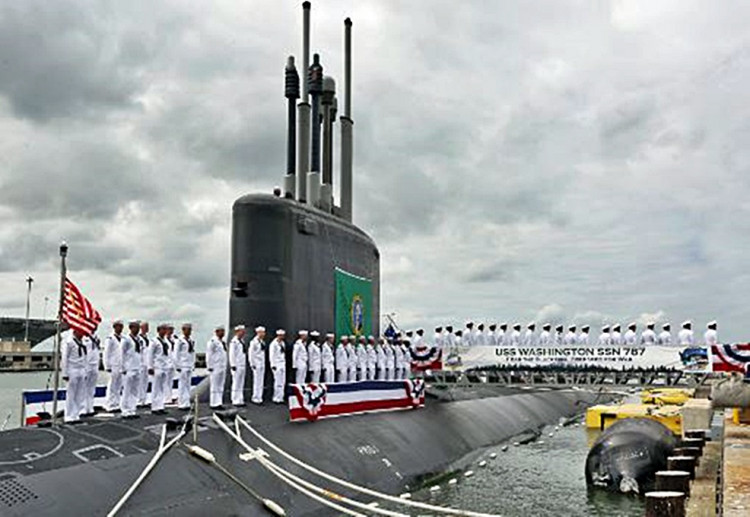China's anti-access/area denial (A2/AD) defense network covering the Sea of Japan, the East China Sea and the South China Sea might deter surface warships of the U.S. Navy but will be totally ineffective against missile attacks by American submarines.
This blatant vulnerability of China's A2/AD network is the key reason why the U.S. Navy is converting a number of its Virginia-class attack submarines (SSNs) into the "Block III" standard to execute massive land-attack missile bombardments; perform "covert insertions" of Special Forces operators and conduct reconnaissance missions undetected. China's man-made islands and those in the South China Sea it seized from other countries are natural targets for these "spy boats."
Increasing the undersea strike capability of Virginia-class Block III boats is vital to the Navy's plans to degrade China's A2/AD strategy. Military experts note China's A2/AD strategy is ineffective against submerged submarines launching salvo after salvo of cruise missiles.
In April 2017, the Navy reported exceptional results from the first sea trial of its Virginia-class Block III SSN, the USS Washington (SSN-787).
The trial tested all systems, components, and compartments of the USS Washington. This boat submerged for the first time and operated at high speeds on the surface and underwater.
Washington's successful test follows news from the Navy that it will be possible to build more Virginia-class attack submarines at a faster pace than currently planned. The Navy is ramping up production of the Virginia-class to counter the expansion of the submarine fleets of both the People's Liberation Army Navy (PLAN) and the Russian Navy (VMFRF).
The Navy is transforming Virginia-class SSNs into very heavily armed underwater "battleships" with more than enough missile tube firepower to invalidate China's A2/AD strategy in Asia.
The new missile tubes are called "Virginia Payload Modules" (VPMs). They'll tremendously boost each Virginia's arsenal of UGM-109 Tomahawk sub-sonic cruise missiles to 40 from 12 with the addition of 28 more missile tubes. The VPMs will more than triple the offensive firepower of Virginia-class SSNs. Each module consists of four 87-inch vertical launch tubes.
The new missile tubes under assembly will equip 10 Block V subs, the next generation to the Block IV now in service. The U.S. Navy has 12 active Virginia subs out of the 48 planned for service. Five boats are building.
Increasing its capability to launch missile waves underwater is vital to the Navy's plans to degrade China's A2/AD strategy. This strategy aims to keep U.S. surface warships as far away from the Chinese mainland as possible by threatening them with anti-ship ballistic missiles (ASBMs) such as the DF-21D.






